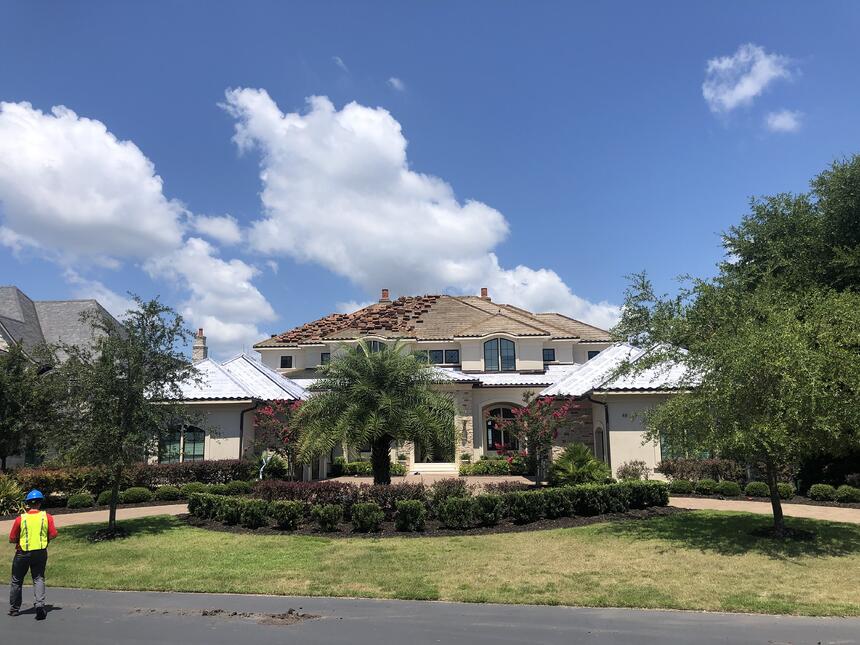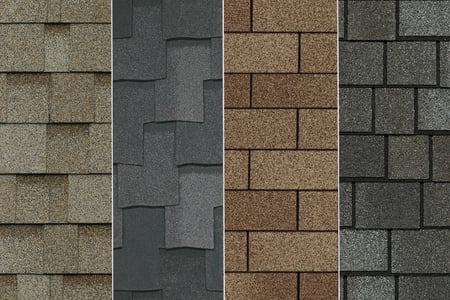
Roofs don’t wait for the “right time” to need replacing. They don’t care about your budget, your vacation plans, or that you just had to replace your car’s transmission. One day, you’re going about your life, and the next, you’re staring at water stains on your ceiling, curled shingles, or, worst case scenario, sunlight peeking through your attic.
At RoofCrafters, we can tell you that if you're thinking, “I need a new roof, but I can’t afford it,” you’re not alone. A roof replacement is one of the biggest home improvement expenses, often costing anywhere from $5,000 to $20,000+ depending on materials, roof size, and labor.
In the same breath, putting off a new roof can lead to bigger (and more expensive) problems, like interior water damage, mold growth, and structural issues. So, what can you do? Let’s break it down together!
Explore Roof Financing Options
Most homeowners don’t have thousands of dollars lying around for a new roof, and that’s why financing exists. Here are some common ways to fund your roof replacement without paying everything upfront:
Personal Loans
Many banks, credit unions, and online lenders offer personal loans for home improvements. If you have decent credit, you could secure a loan with a reasonable interest rate. Personal loans are unsecured, meaning you don’t have to put your home up as collateral.
Home Equity Loans or HELOCs
If you’ve built up equity in your home, a home equity loan or home equity line of credit (HELOC) can provide the funds you need. The downside? Your home is used as collateral, meaning if you default, the lender could foreclose.
Roofing Company Financing
Many roofing companies offer in-house financing or partner with third-party lenders to provide low-interest payment plans. Some even have 0% interest promotional offers if you pay within a certain timeframe.
Check if Insurance Will Cover It
Your homeowners insurance may cover roof replacement, but it depends on why your roof is failing. If the damage is due to a covered peril (like hail, windstorms, or falling debris), your policy might pay for some or all of the costs, minus your deductible.
However, if your roof is simply old or poorly maintained, insurance likely won’t help.
How to Get Insurance to Cover Your Roof Replacement:
- Review your policy: Check for roof coverage details, exclusions, and deductible amounts.
- Document the damage: Take clear photos of problem areas before making any repairs.
- Call a roofing contractor: Get an inspection and an estimate. Some roofers work directly with insurance companies to help with claims.
- File a claim: If the damage qualifies, your insurance adjuster will assess the situation.
Pro tip: If your claim gets denied but you believe the damage should be covered, you can appeal the decision or hire a public adjuster to negotiate on your behalf.
Look Into Government Grants and Assistance Programs

Depending on where you live, you might qualify for financial assistance programs that help cover the cost of a new roof. Some options include:
HUD Home Repair Grants and Loans
The U.S. Department of Housing and Urban Development (HUD) offers grants and low-interest loans for homeowners needing critical repairs.
- Section 504 home repair program: Provides loans up to $40,000 and grants up to $10,000 for very low-income homeowners.
- Weatherization assistance program (WAP): Helps low-income families improve energy efficiency, which sometimes includes roofing improvements.
State and Local Grant Programs
Many states and counties offer home improvement grants for seniors, veterans, or low-income households. Search your local housing authority or state government website to see what’s available.
Consider a Partial Roof Replacement or Repair
A full roof replacement might not be necessary just yet. If only part of your roof is failing, a repair or partial replacement could extend its life while you save for a full replacement.
Signs you might only need a repair:
- A few missing or damaged shingles
- Minor leaks that haven’t spread
- Localized damage from a fallen branch or storm
Keep in mind, though, that patch jobs are temporary solutions. If your roof is nearing the end of its lifespan (typically 15-30 years, depending on material), a full replacement is the better long-term investment.
Use Alternative Roofing Materials

If cost is the main concern, consider budget-friendly roofing materials that still offer durability:
- Asphalt shingles: The most affordable and common roofing material.
- Metal roofing: Higher upfront cost but lasts 40+ years and is energy-efficient.
- Rolled roofing: A cheap option for low-slope roofs, but has a shorter lifespan.
Avoid expensive options like slate or wood shake unless they’re required in your area.
Take Preventative Measures While You Save
If you absolutely can’t afford a new roof right now, take steps to prevent further damage until you can replace it.
- Tarp over leaks: If you have active leaks, use a heavy-duty tarp to cover problem areas.
- Keep gutters clean: Clogged gutters can make roof issues worse by trapping water.
- Fix minor issues quickly: Small problems (like a lifted shingle) can turn into expensive disasters if left unattended.
Take Action to Protect Your Home (However You Can)
Replacing a roof when you can’t afford it is a stressful situation, but you have options. Between financing, insurance, grants, and creative cost-saving strategies, you can find a way to protect your home without breaking the bank.
If you’re unsure where to start, reach out to a reputable roofing contractor for an inspection and financing options. Some companies even offer free inspections and can help you navigate insurance claims or payment plans.
A failing roof is overwhelming, but the sooner you take action, the more control you’ll have over the process, and the less money you’ll have to spend on avoidable damage down the line. Need expert advice on affordable roofing solutions? Be sure to hit that “Schedule an Inspection” button down below, and one of our representatives will walk you through the process!
My name is Mitch, and I have over 10 years of roofing experience. I enjoy my career in the service industry because I love helping others take care of their homes and businesses. With over 10 years in the roofing industry, my success comes from my honesty and integrity during my roof inspections. I do my best to listen to the needs of my clients and strive to provide an awesome client experience.



